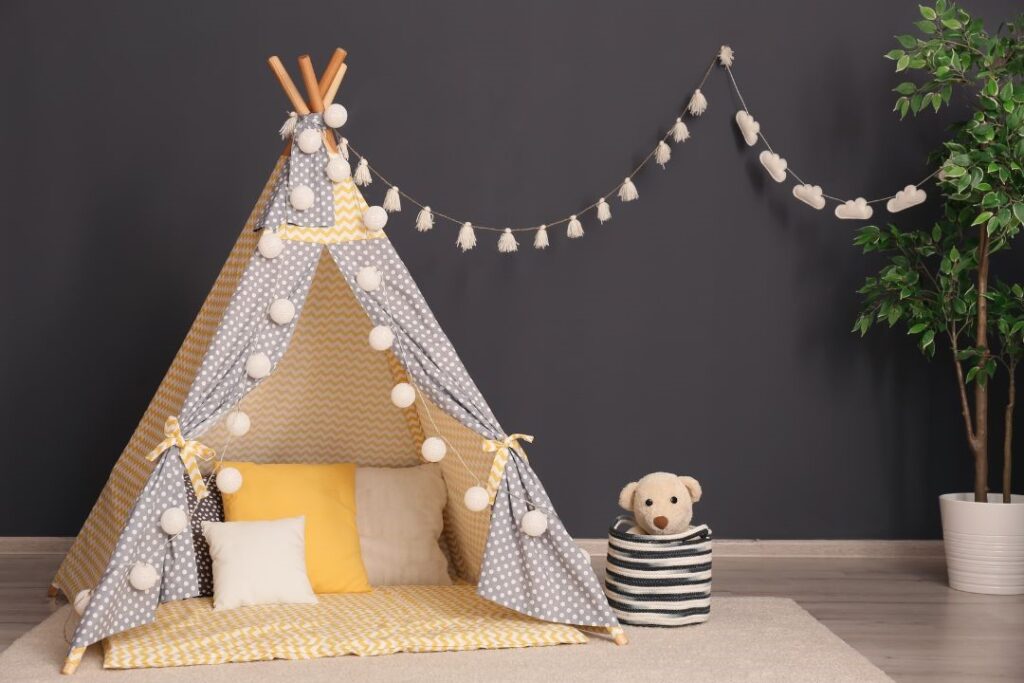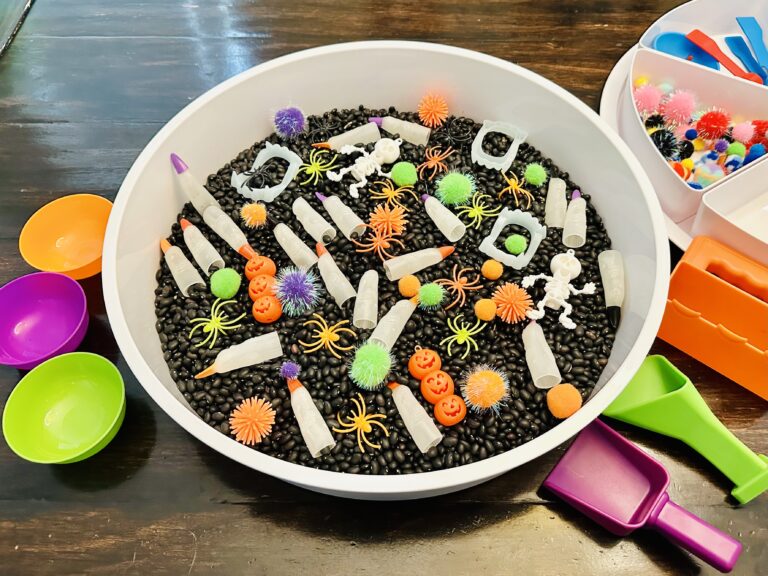How to Create a Calm Down Corner

How to create a calm down corner, a safe, soothing space where your autistic child can retreat when they’re feeling overwhelmed.
This post may contain affiliate links and I could earn a small commission at no cost to you. However, I will never recommend anything that I do not believe in or use myself. You can read more about my disclosure policy here.
Did you know that up to 80% of autistic children struggle with sensory processing challenges? It’s no wonder that finding calm in a chaotic world can be a real struggle.
But here’s the thing: you can help. A calm down corner (a simple, dedicated space in your home) can be a game changer. It’s not just a cozy corner, it’s a tool for self-regulation, a sensory retreat, and a lifeline during meltdowns.
You don’t need a lot of space or fancy equipment. What you need is intention. With a few key elements, you can create a haven that meets your child’s unique needs and gives them the space to reset.
Whether they’re overstimulated, anxious, or just needing a break, this corner can become their go-to spot. And the best part? Setting it up is easier than you think.
If you’re unsure where to start or how to make this area appealing for your child, we’ve got you covered! Check out these 5 steps to create a calm down corner for you child within your home.
5 Steps to Create a Calm Down Corner for Autism
Step 1: Select the Right Location
First step to making a calm down corner, find a quiet and comfortable corner in your home where your child can feel secure. This could be a spot in their bedroom, a part of the living room, or even a small nook under the stairs. The key is to choose a place away from high-traffic areas and loud noises.
Quiet and Low-Traffic: The location should be away from the hustle and bustle of the house. Avoid areas near TVs, kitchens, or any place with heavy foot traffic. This ensures your child can retreat to a truly quiet space when they need to.
Accessible and Visible: Make sure the corner is easily accessible. It’s also important that you can keep an eye on your child while they’re using the calm down corner, especially if they’re younger. A spot where you can discreetly supervise them without making them feel watched is ideal.
Consistency: Try to choose a spot that can be permanently designated as their calm down corner. This consistency helps your child know that this space is always available to them whenever they need it.
Step 2: Make It Comfortable and Inviting
Comfort is key. Think soft textures and calming colors that will make your child feel cozy and safe. Here are some ideas to get you started:
Soft Seating: Include a bean bag chair, sensory chair, soft mat, or pile of plush pillows. This provides a comfortable place for your child to sit or lie down. Choose fabrics that are soft to the touch and not too stimulating.
Blankets and Throws: Add a few soft blankets or throws. Many autistic children find comfort in being wrapped up or snuggling under a blanket. Consider using a weighted blanket (highly recommend this one we use) for additional deep pressure input, which can be very calming.
Gentle Lighting: Soft, dim lighting can create a soothing atmosphere. Consider using fairy lights, a soft lamp, or even a light projector (this astronaut one is awesome!) that casts calming images on the walls. Avoid bright or fluorescent lights, which can be overstimulating.
Color Scheme: Use calming colors such as blues, greens, and soft neutrals. Avoid bright, bold colors that can be overstimulating. You can also use wall decals or posters with calming images like nature scenes or underwater landscapes.
Step 3: Stock Up on Sensory Tools
Equip your calm down corner with sensory tools that can help your child self-regulate. Here are some suggestions:
Weighted Blankets or Lap Pads: A weighted blanket or weighted lap pad (these cute stuffed animal weighted lap pads are perfect for kids) can offer deep pressure input, which many autistic children find calming. The weight provides a gentle, soothing sensation that can help reduce anxiety.
Noise Canceling Headphones: Noise cancelling headphones or kids earplugs can help block out overwhelming sounds and provide a sense of calm. Consider headphones with soft, cushioned earpieces for added comfort.
Sensory Bottles: Sensory tubes filled with glitter and water can be mesmerizing and soothing for your child. Watching the glitter slowly settle can help your child focus and relax.
Chewable Jewelry: If your child finds oral sensory input calming, consider providing chewable necklaces or bracelets. These are safe for chewing and can help satisfy your child’s sensory needs.
Stuffed Animals: A few favorite stuffed animals (Squishmallows are the best!) can provide comfort and a sense of security. Choose ones with soft, pleasant textures that your child likes.
Fidget Toys: Stress balls, fidget spinners, or stretchy bands can provide a tactile outlet for sensory input. Fidget toys are great for helping children focus and calm down.
Step 4: Introduce Calming Techniques
Teaching your child how to use their calm down corner effectively is essential. Introduce them to simple calming techniques such as:
Deep Breathing: Show them how to take deep breaths in through their nose and out through their mouth. You can practice this together by blowing bubbles or using a pinwheel. Deep breathing helps slow the heart rate and calm the mind.
Mindfulness Exercises: Simple mindfulness exercises, like focusing on their breathing or listening to the sounds around them, can help ground your child. You can use guided meditation apps or recordings with calm, soothing voices.
Visual Supports: Use visual aids like picture cards that illustrate calming techniques or routines they can follow when they’re feeling overwhelmed. These can include steps for deep breathing, stretching, or using a sensory tool.
Step 5: Personalize the Space
Make the calm down corner personal to your child. Let them help with the decorating and choose some of the items to include. This will make them feel more connected to the space and more likely to use it when they need it.
Child’s Input: Involve your child in the process of setting up their calm down corner. Let them choose the colors, decorations, and some of the sensory tools. This ownership will make the space feel special and personal.
Favorite Items: Include some of your child’s favorite items in the corner. This could be a favorite book, a beloved stuffed animal, or a special blanket. Familiar and comforting objects can help your child feel more at ease.
Visual Schedule: If your child uses a visual schedule or routine chart, consider including it in the calm down corner. This can help them understand when and how to use the space.
Adjust Over Time: Be open to making changes based on your child’s feedback and evolving needs. As your child grows and their preferences change, update the calm down corner to continue meeting their needs.
Final Thoughts
Remember, the goal of a calm down corner is to create a safe, soothing space where your child can retreat when they’re feeling overwhelmed. It’s not a punishment or time-out spot, but rather a place of refuge and comfort.
By creating this special corner, you’re giving your child a powerful tool to help them manage their emotions and sensory needs. Plus, it’s a lovely reminder that even in the whirlwind of parenting, there’s always room for a little calm.
Happy parenting, and may your calm down corner be a sanctuary of peace for your little one!
If you have any other tips or experiences with calm down corners for autism, feel free to share in the comments below. We’re all in this together, after all!
Recommended
- Common Warning Signs Of Sensory Processing Disorder In Kids
- How to Calm Autistic Meltdowns: 7 Tips that Work
- 10 Helpful Strategies to Calm After School Meltdowns
- How to Connect with Your Autistic Child
- 25 Ways Life Looks Different Parenting an Autistic Child






